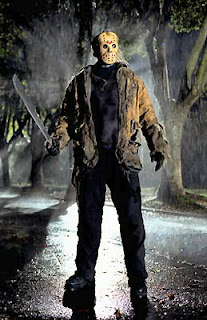A common character in many slasher movies is the heroine or "the final girl". They sometimes have some sort of relation to the killer and are often equipped with a special skill or certain ability to combat them. More often than not they survive the film and defeat the villain in the 'final battle'.
Laurie Strode
Laurie Strode is the main antagonist of the Halloween franchise, despite not appearing in all of the instalments she is easily the most iconic person ever to go head to head with Michael Myers. Laurie Strode is widely recognised as the first true female heroine in a slasher film, one of the earliest and most influential examples of the "final girl", and it is made clear to slasher audiences that several of later movies heroines have some of her traits and adhere to several conventions that she was part of introducing.
Nancy Thompson
Nancy Thompson is the main antagonist of A nightmare on Elm street and one of the main deuteragonists of A nightmare on Elm street 3: Dream warriors. She was the daughter of an alcoholic mother and a policeman father. In the first film she was haunted by Freddy Krueger the dream demon during his original killing spree on the children of Elm street, whilst in the third film she was a researcher at Western hills hospital who helped the remaining children of Elm street defend themselves against Freddy. She falls victim to Freddy towards the end of the film when he stabs her with his iconic bladed glove. She is the last person to die in the film. The death of Nancy brought a big change to slasher films as it broke the convention of the heroine serving until the end and defeating the villain.
Sidney Prescott
Sidney Prescott is the main protagonist of the Scream franchise, appearing in all four films. Linked to all of the killing sprees committed by all those who took on the alias of 'Ghostface', Sidney showed that she was more than a match for all of the killers. Originally surviving the first killers Billy Loomis and Stu Macher and eventually going on to encounter her own cousin, Jill, in the fourth film. Daughter to the infamous Maureen Prescott ( the woman responsible for the divorce of Billy's parents and victim of the rape and murder committed by Billy and Stu in response) Sidney showed she was nothing like her mother by remaining a virgin( until the ending) and considered as being conservative in terms of character. She goes through a great deal of change; being somewhat tough already in the first film to Being nothing short of a true hero by the fourth- she's even brave enough to take on Ghostface in a physical combat. The attempts on her life have made her braver and tougher, allowing her to save the lives of others even in the face of danger, not like your typical damsel in distress.
Alice Hardy
Alice Hardy is the main protagonist of Friday the 13th(1980). She is one of the counsellors at camp crystal lake and was the only survivor of Pamela Vorhees killing spree. Alice fits many of the traits that make a final girl, she's a virgin and quite conservative, especially in comparison to her fellow counsellors. Horror movie conventions dictate that she will be the final girl and she does so in great fashion. Towards the end of the film , Pamela Vorhees confronts Alice about how the counselors let Jason drown in the lake. Obviously Alice is not one go these counselors as Jason died many years previous to her arrival at the camp. After a long chase, Alice finally gets the upper hand and decapitates Pamela- ending her killing spree. In a dream, she falls asleep on a boat and Jason pulls her under killing her, for her to wake up and find it was only in her head. However in the second film she isn't so fortunate when Jason shows up for real. He finds out that she murdered his beloved mother and seeks revenge. He puts his mothers head in her fridge, once she discovers it Jason stabs her through the head with a screwdriver, becoming his first victim. Showing not every heroine lasts the entire franchise.





























